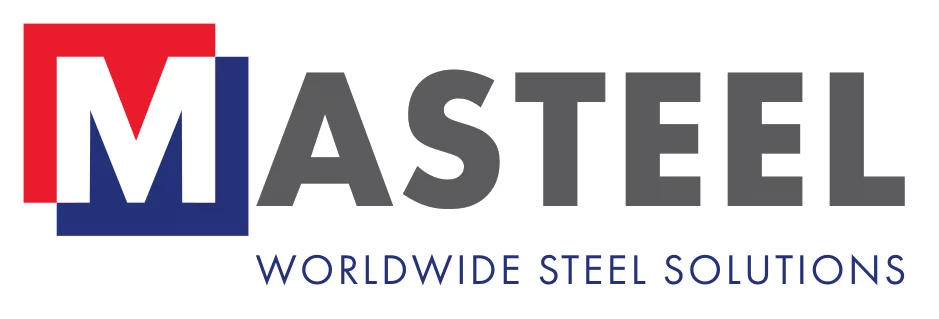In a collision, the strength of a vehicle’s structure makes all the difference to passenger safety and overall crash performance. Automotive crash structures are designed to manage impact forces, absorbing energy while keeping the passenger cell intact. They must deliver protection without adding any unnecessary weight, which makes material choice critical. High-strength low alloy (HSLA) steels are widely used in automotive crash structure applications, offering the strength, ductility, toughness, and weldability required for delivering reliable and efficient performance. For engineers, the versatility of HSLA steels make them a trusted solution for balancing safety with efficiency in modern vehicle design.
The Role of Crash Structures in Vehicle Safety
Crash structures manage impact forces in distinct ways, depending on their location within the vehicle. Rails, beams, pillars, and cross members channel forces along predetermined paths, helping to keep occupants safe by maintaining the integrity of the cabin. Some elements, such as crumple zones, are engineered to deform and absorb energy, while others, including pillars and chassis reinforcements, must remain rigid to preserve the passenger cell.
Achieving controlled deformation and cabin protection during a crash calls for materials that are strong yet ductile, tough enough to resist cracking, and consistent under the rapid loading of an impact. They must also be easy to process, with good weldability and formability for large-scale automotive production. HSLA steels are able to meet such requirements, which is why they are widely used in the design of modern automotive crash structures.
What Are High-Strength Low Alloy Steels?
HSLA steels are low-carbon steels that have been strengthened through small additions of alloying elements, such as niobium, vanadium, and titanium. When used alongside thermo-mechanical rolling and controlled cooling, the alloying additions refine the grain structure and form fine precipitates that increase strength without sacrificing ductility.
Rather than being defined by their chemistry, HSLA grades are classified by mechanical performance. Typical yield strengths range from 250 to more than 800 MPa, with toughness and weldability retained even at higher strength levels. By focusing on performance, this classification emphasises the suitability of HSLA steels for structural applications that demand both strength and formability, such as rails, cross members, and reinforcements in automotive crash structures.
What sets HSLA steels apart from conventional steels is their behavior under crash conditions. In the milliseconds of a collision, their strength increases due to strain-rate sensitivity. Such a response helps critical crash components like crumple zones, side impact beams, and chassis reinforcements resist sudden collapse but still deform in a controlled manner to absorb energy, providing the balance needed for effective crash performance.
Why HSLA Steels Are Chosen for Automotive Crash Structures
The value of HSLA steels in automotive crash structures stems from their:
- Strength-to-weight efficiency: A high yield strength enables thinner sections, reducing vehicle weight without a loss of performance.
- Energy absorption: Their ability to deform in a stable, controlled way allows them to absorb crash energy effectively in crumple zones and rails.
- Durability: HSLA steels resist fatigue and crack growth, functioning reliably over a vehicle’s lifetime.
- Manufacturing practicality: They can be cold-formed through stamping and bending, and joined by resistance spot or arc welding, keeping production efficient and cost-effective.
This mix of attributes, from mechanical properties to production efficiency, make HSLA steels a versatile and dependable choice in vehicle safety design.
Where HSLA Steels Are Used in Automotive Crash Structures
HSLA steels can be used throughout a vehicle’s crash management system, where they serve different functions depending on the component:
- Rails and cross-members: Carry and distribute crash forces along the length of the vehicle.
- Side impact beams and door bars: Provide lateral intrusion resistance in side collisions.
- Chassis reinforcements and subframes: Deliver strength and fatigue resistance where loads are high.
- Crumple zones: Absorb impact energy through controlled material deformation.
Together, these applications highlight the adaptability of HSLA steels in meeting the varied demands of automotive crash structures.
The HSLA Grades Used in Automotive Crash Structures
As automotive crash structures serve many purposes, different grades of HSLA steel are required, offering distinct performance characteristics:
- S500MC and S550MC: Combine strength with ductility, making them suitable for door intrusion beams, side impact protection, and thin-walled crash management parts.
- S700MC: Delivers high yield strength alongside good formability and is utilised in reinforcement zones and crumple structures.
- S960MC: An ultra-high strength grade, applied in longitudinal beams and subframe reinforcements where maximum safety is needed.
Each grade reflects a balance of properties that allow engineers to optimise safety and weight reduction simultaneously, ensuring every part of the crash structure performs its role effectively.
Enhance Automotive Safety with HSLA Steels From Masteel
At Masteel, we supply a variety of HSLA steel grades, including S500MC, S700MC, and S960MC, that enable the development of advanced crash structures. Our technical specialists work closely with manufacturers to ensure grade selection and component design align with both safety standards and performance goals. Reach out to us today to learn more about our HSLA steels and how they can advance your next automotive project.
